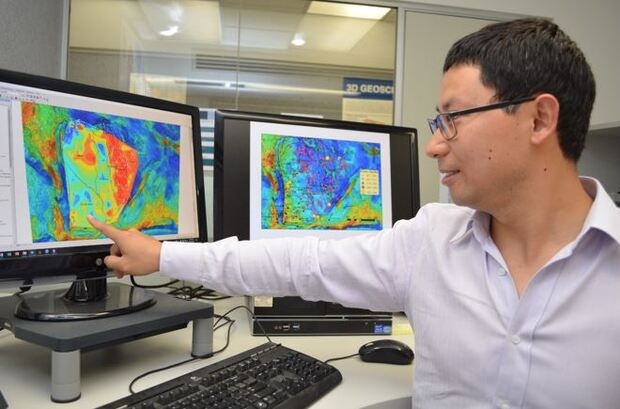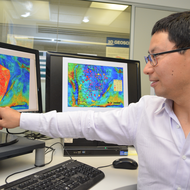Waldemar Lindgren Award recognises ‘significant contribution to the science of economic geology’
| Date: | Thursday, 20 December 2018 |
|---|
A Department of Mines, Industry Regulation and Safety (DMIRS) scientist has won one of the world’s most prestigious geology awards for young scientists.

Senior Geochronologist Dr Yongjun Lu has won the Society of Economic Geologists’ (SEG) 2018 Waldemar Lindgren Award.
Congratulating Dr Lu on becoming the 52nd recipient of the society’s award for young scientists, SEG President Bruce Gemmell said it recognised Dr Lu’s “significant contribution to the science of economic geology at this early stage in your career”.
Dr Lu said he was deeply honoured to have been chosen for the award by the society.
“It is such a privilege to win this very prestigious award,” he said. “It’s also recognition of the excellent work being done by the Geological Survey of Western Australia (GSWA).”
Dr Lu said that the award was for a body of work including isotopic mapping and zircon fertility, an area of geoscience that he is passionate about and has figured prominently in his career for a number of years, going back to his work on the Tibetan plateau as part of his post-graduate research at the University of Western Australia.
Dr Lu’s supervisor, GSWA Geochronology and Geochemistry Manager Dr Michael Wingate said that Dr Lu thoroughly deserved to win the medal and praised his work at GSWA.
“Yongjun’s work has been highly impressive, particularly his work in using geochemistry and the trace element compositions of zircons to identify granitic rocks that might be prospective for copper– molybdenum –gold deposits, an area that no doubt contributed to his win,” Dr Wingate said.
Dr Lu is currently working on the isotopic mapping and fertility of Archean granitic rocks in the South West Terrane of the Yilgarn Craton.
“Western Australia’s south-west region is not well understood,” he said. “There has been very little research in the past 20 years despite the fact that the region has what is currently Australia’s largest gold mine at Boddington and the world’s largest lithium mine at Greenbushes.
“In the past two years I have been working with GSWA’s Dr Hugh Smithies in the field collecting more than 250 granite samples across the South West Terrane to try to understand the ages of the rocks, their chemical compositions, and the crustal structure.
“I have also been working with Dr Michael Wingate on the geochronology of these rocks, and combining this with isotope studies and zircon chemistry, all sorts of different analyses, to understand the terrane’s crustal evolution in space and time.”
Dr Lu said that he believed it was essential to gain a better understanding of the regional geology before considering prospectivity.
“We have to understand the regional geological context before we start looking for mineralisation,” he said. “Understanding the geological evolution of this terrane will help industry to explore in this area.”
Dr Lu, who has been with GSWA since 2015, has a wide network of research affiliations that includes Curtin University’s John de Laeter Centre, the University of Western Australia’s Centre for Exploration Targeting, Macquarie University’s Australian Research Council Centre of Excellence for Core to Crust Fluid Systems, the Chinese Academy of Geological Sciences’ Institute of Geology, and the China University of Geosciences’ School of Earth Science and Mineral Resources.

